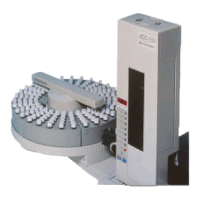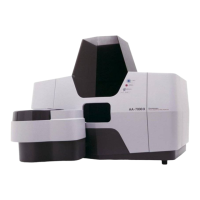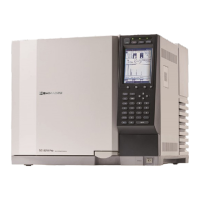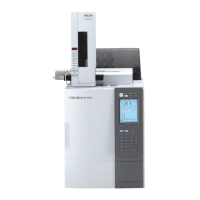50
55 CalibrationCalibration
Saving Records of Calibration
It is possible to save records of calibration execution, and to assign each balance an ID so that multiple
balances can be managed.
Record of Calibration Printing Samples
The record of calibration shown below is a sample. The details to be output can be set by the user.
^ [GLP output Function] (P.145)
Example of Printer Output
(When the GLP output function is set at ON.)
Type of Calibration
Name of Manufacturer
Using standard weights value
The person who calibration
Signs here
The Balance Weighing
Values before Calibration
The Balance Weighing
Values before Calibration
Time
Date
Balance Model
Balance ID
Balance Serial Number
Printing Sensitivity Calibration Records
The GLP output function can be set at ON or OFF when printing sensitivity calibration records.
^ [GLP output Function] (P.145)
Perfect Self Calibration (PSC) Settings (W-AD/ W/ X Series only)
The sensitivity temperature coefficient for the AP Series has been adjusted within a range of
±2ppm/°C. When a 100g sample is being measured, there is a possibility that a change in sensitivity
up to a maximum of ±0.2mg will occur for 100g if the temperature inside the balance fluctuations by
1°C. This means that a 300g sample will experience a change of up to a maximum of ±0.6mg, which
will greatly affect measurement accuracy.
The W/X Series is equipped with an automatic sensitivity adjustment (PSC: Perfect Self Calibration)
function that adjusts sensitivity completely automatically when it detects fluctuations in temperatures to
ensure that measurements are carried out correctly.
The Perfect Self Calibration function can be switched off and the settings amended in accordance.
There are two different sets of conditions required for operating the Perfect Self Calibration function.
The condition that acquires the greater levels of accuracy is given priority out of these two sets of conditions.
(1)
Directly setting the parameters to the amount of temperature change when temperature change is detected.
This function maintains compatibility with Shimadzu’s conventional models. This function is to be
used when accuracy management is to be performed in accordance with temperature.
(2) Setting the parameters at permissible accuracy levels required for weighing large numbers of
samples under normal weight conditions.
It is recommended that temperature fluctuation is initially set at 1.0°C if it is not known what temperature to set in
order to satisfy the specifications (within +/-2ppm/Deg.C). The required level of permissible accuracy must also be
entered. PSC weighing performance will be adversely affected if temperature fluctuation is set lower than necessary
and if the precision setting is frequently raised, so check work efficiency levels and set the parameters appropriately.
* Permissible accuracy is defined as the upper limit for fluctuations when sensitivity changes due to
temperature fluctuations that affect operations inside the balance.
*
In addition to the above two conditions, PCS will also be carried out forcibly after four hours have elapsed since
the previous sensitivity calibration. This is to prevent the sensitivity from changing owing to the passage of time.
*
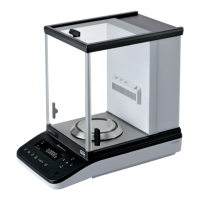
